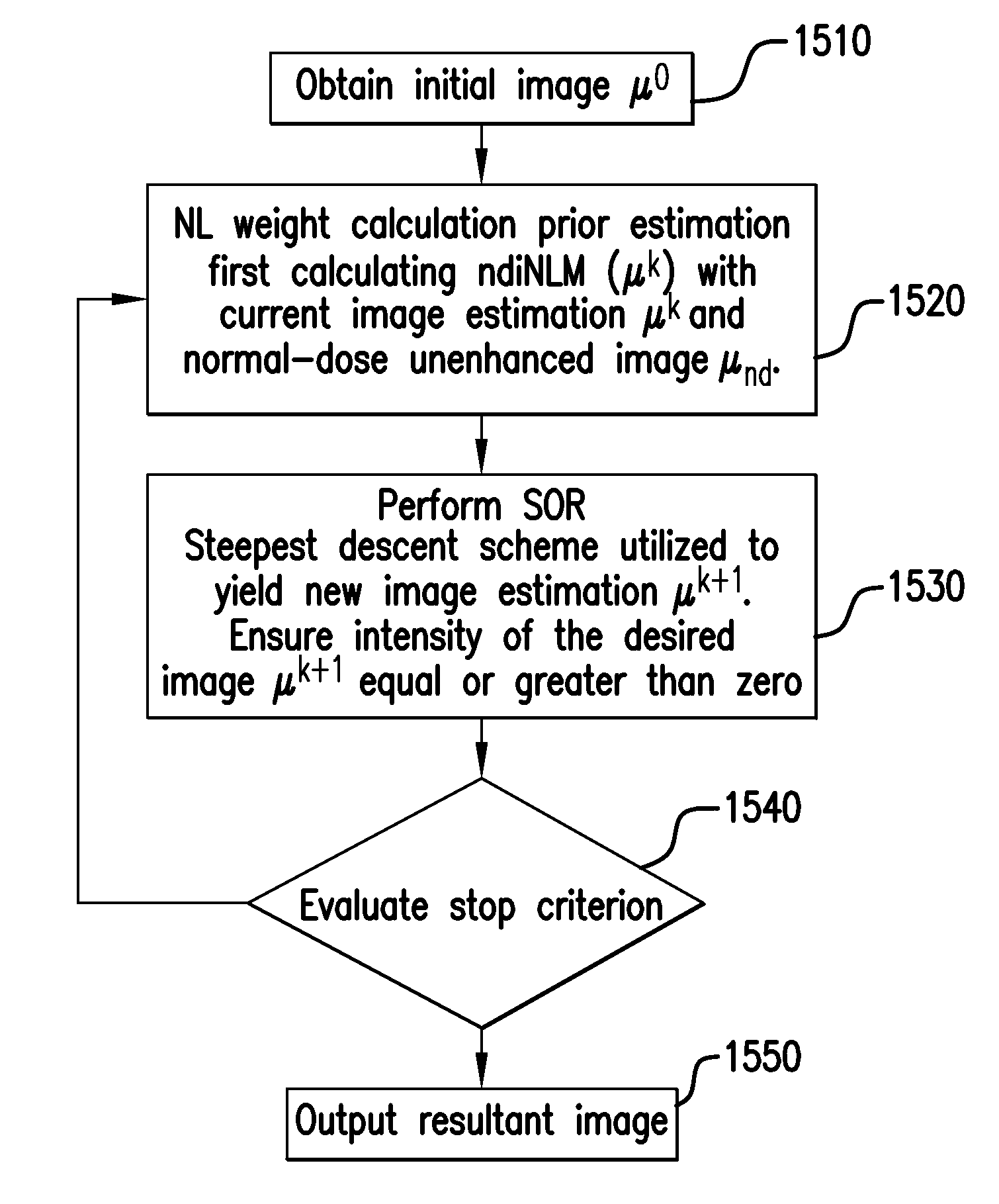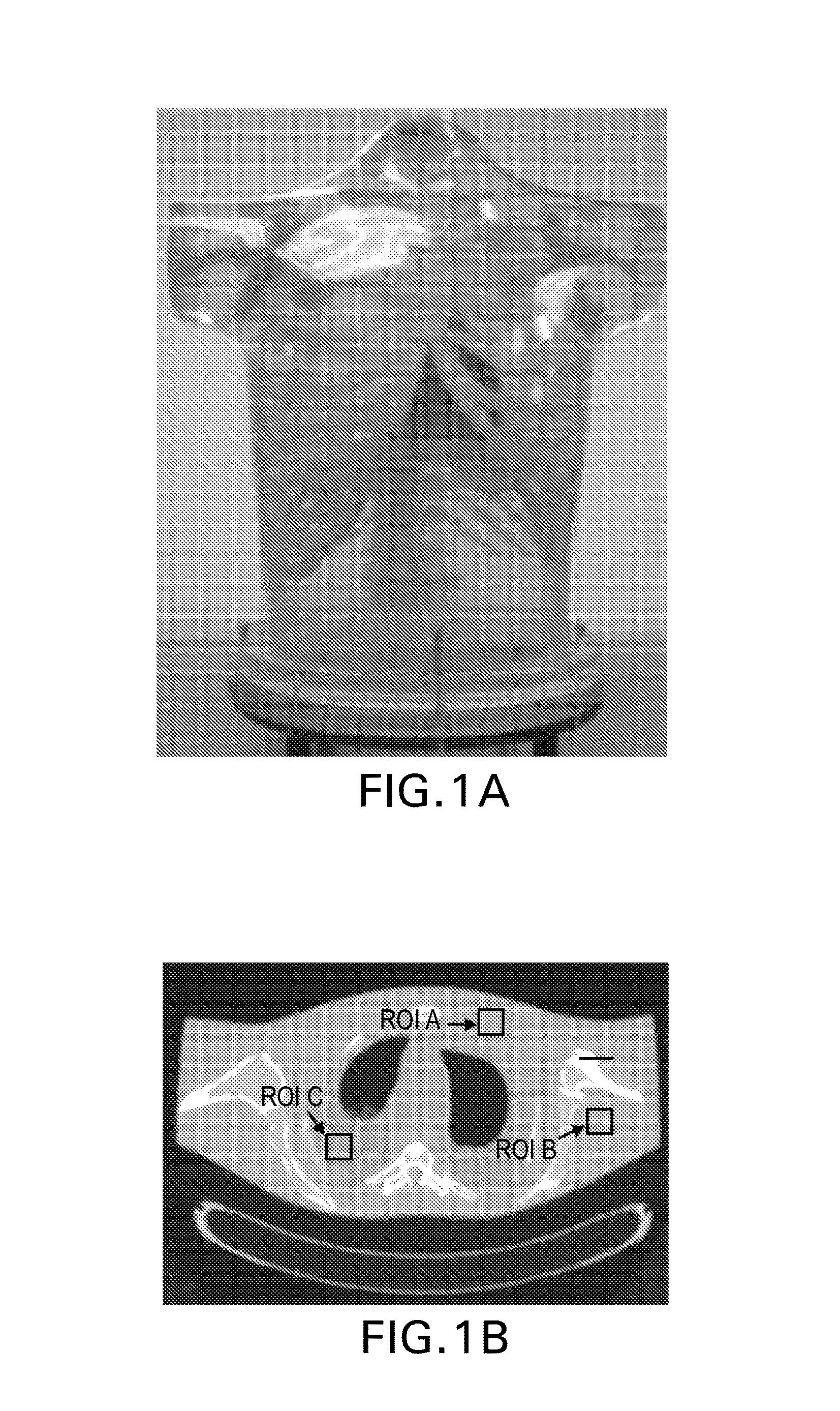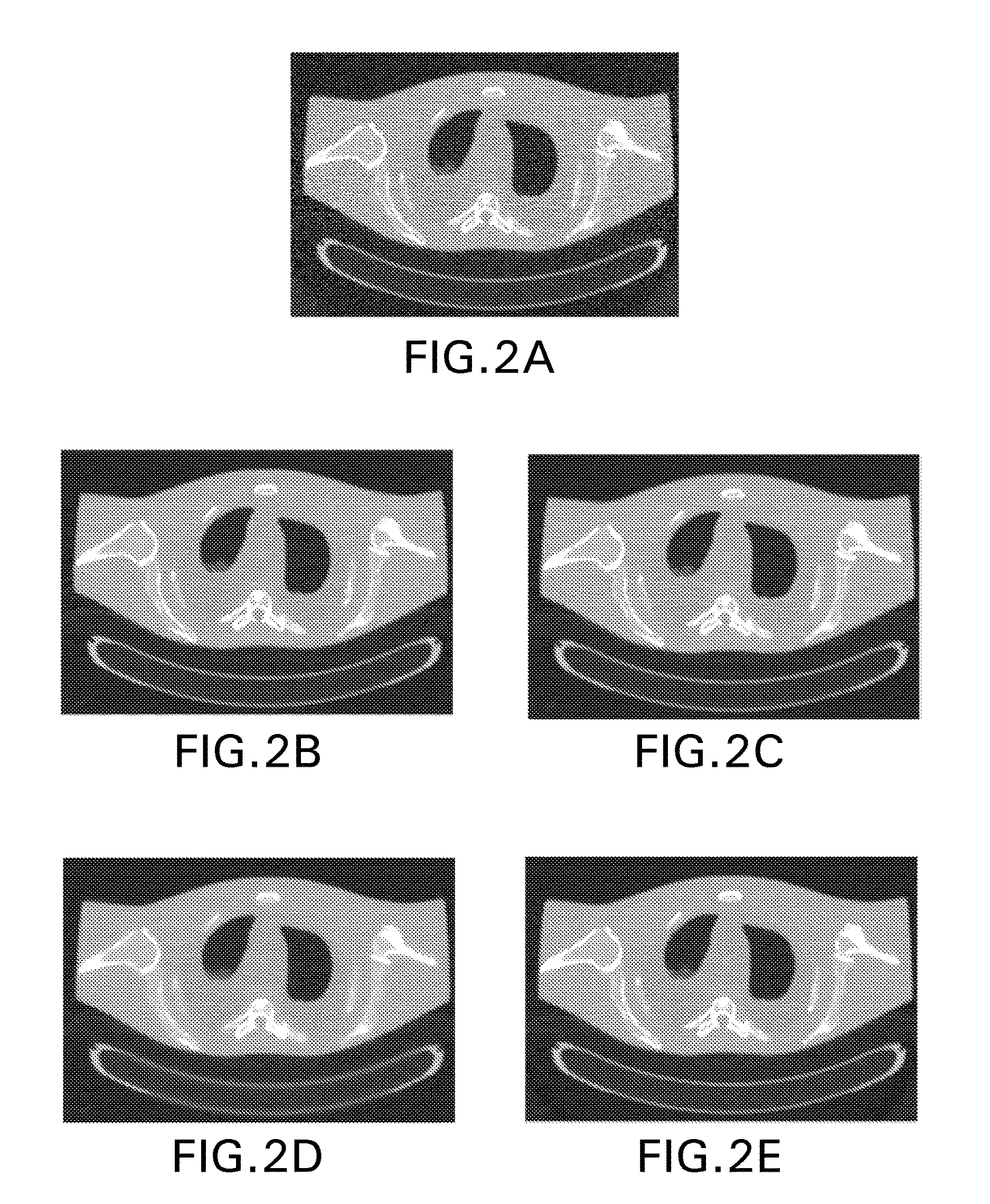Iterative reconstruction for X-ray computed tomography using prior-image induced nonlocal regularization
a computed tomography and prior image technology, applied in the field of medical imaging, can solve the problems of serious noise induced artifacts in associated images, reduced image quality, and reduced image quality, and achieve the effect of improving the current low-dose image quality
- Summary
- Abstract
- Description
- Claims
- Application Information
AI Technical Summary
Benefits of technology
Problems solved by technology
Method used
Image
Examples
Embodiment Construction
[0033]The following detailed description of preferred embodiments of the invention will be made in reference to the accompanying drawings. In describing the invention, an explanation about related functions or constructions known in the art are omitted for the sake of clearness in understanding the concept of the invention, and to avoid obscuring the invention with unnecessary detail.
[0034]In regards to a PWLS criteria for CT Image Reconstruction, the X-ray CT measurement can be approximately expressed as a discrete linear system according to Equation (1):
y=Hμ, (1)
where μ denotes a vector of attenuation coefficients, i.e., μ=(μ1, μ2, . . . , μN)′, y represents obtained sinogram data (projections after system calibration and logarithm transformation), i.e., y=(y1, y2, . . . , yM)′, with “′” denoting matrix transpose, and operator H represents the system or projection matrix with a M×N size, and Hij denotes the length of intersection of projection ray i with pixel j. In a preferred e...
PUM
 Login to View More
Login to View More Abstract
Description
Claims
Application Information
 Login to View More
Login to View More - R&D
- Intellectual Property
- Life Sciences
- Materials
- Tech Scout
- Unparalleled Data Quality
- Higher Quality Content
- 60% Fewer Hallucinations
Browse by: Latest US Patents, China's latest patents, Technical Efficacy Thesaurus, Application Domain, Technology Topic, Popular Technical Reports.
© 2025 PatSnap. All rights reserved.Legal|Privacy policy|Modern Slavery Act Transparency Statement|Sitemap|About US| Contact US: help@patsnap.com



